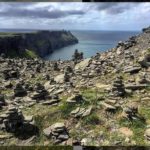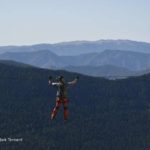The flowers in the French Alps are a great reason to walk in the mountains. This weekend we went walking in the Beaufortain. The hillsides were carpeted with the many flowers of the French Alps. We saw Gentianes, Yellow Pasque Flowers (Pulsatilla alpina apiifolia) and Alpine Pansy (Viola calcarata). Our walk started near the Lac de St Guerin (c. 1500m) and from here we climbed to the ridge (c. 2000m) that also overlooks the Lac de Roselend. Between Beaufort and Areches we saw several herds of Tarine cows enjoying luxuriant meadows. The milk goes to produce dairy products; particularly the cheeses for which the area is famous like Beaufort. Steep alpine pastures don’t lend themselves to intensive agriculture. They have been saved from the quest for ever increased yields by the use of chemical fertilisers, weed killers and insecticides. This has maintained the great diversity of plants and flowers.
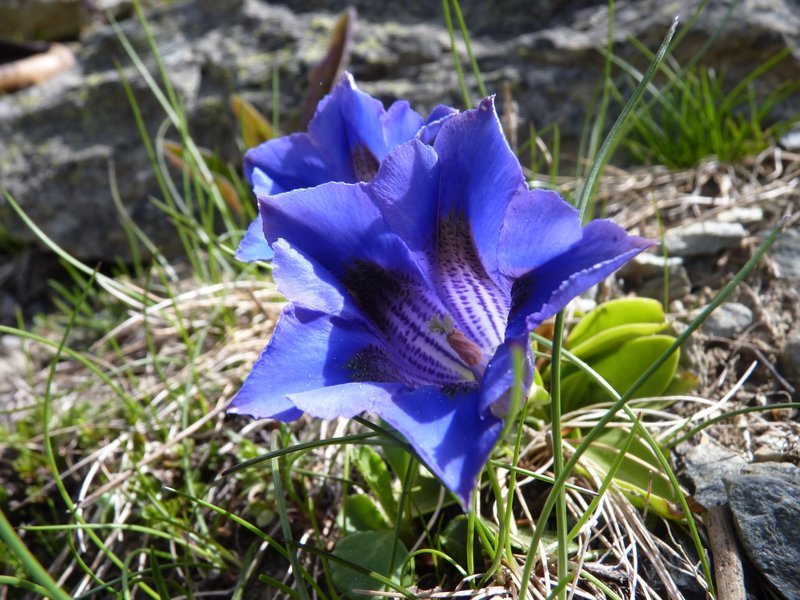
Alpine plants have adapted themselves to the harsh environment. With increasing altitude the weather becomes more extreme. Large variations of temperature, not only through the year but also between day and night. At higher elevations ultra-violet light becomes more intense. Wind speeds increase, so plants are smaller and grow close to the ground. Lack of water can be an issue so plants create their own micro-climates like the Androsace des Alpes (Androsace alpina). The growing season is much shorter. This is not only due to temperatures but also the snow that covers the mountains for around 5 months of the year.
Depending on the altitude the mountains of the Alps are covered in deep snow from late November to mid-April / May. As the snow recedes flowers are quick to emerge from their winter hibernation. Some of the first flowers to appear are Spring Crocuses (Crocus albiflorus) and Soldanelle (Soldanella alpina). We were treated to amazing quantities of Gentiane acaule (Gentiana acaulis). Their stunning blue a wonder of nature contrasting beautifully with the green, browns and greys of the hillside.
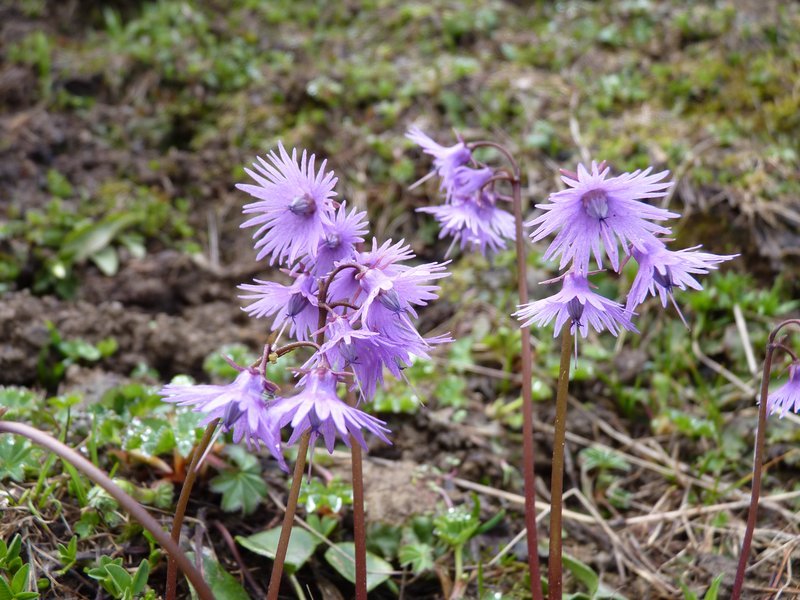
When’s the best time for flowers in the French Alps?
People often ask, when is the best time of year to enjoy Alpine flowers in bloom? June is probably the ideal month but the first half of July is not too late. Clearly the flowers you will see depends on the altitude, the soil, rock type, the aspect, etc. Some plants love boggy, acidic soil whilst others thrive on rocky ground. So, if you’re looking for a particular plant, it helps to know their preferred terrain.
The Edelweiss (Leontopodium alpinum) is synonymous with the Alps. It typically grows between 1800 and 3100m. I’ve found edelweiss whilst walking the Haute Route from Chamonix to Zermatt, in the Vanoise National Park and in the Queyras. I regularly walk the Tour des Glaciers de la Vanoise and know spots where I can almost guarantee to find edelweiss. Those familiar with the Alps will know of drinks like genepy (Artemisia) made from the plant that grows on old glacial moraines. The Yellow Gentian (Gentiana lutea) looks nothing like the blue gentians but is a tall stemmed plant with yellow flowers. It’s roots are used to make Gentiane Liqueur. The famous Chartreuse liqueur is flavoured with a variety of wild plants whose recipe is a closely guarded secret by the monks of the Monastery of the Grande Chartreuse.
In late May I came across the beautiful Aster des Alpes (Aster Alpinus) growing on the rockface traversed by a via ferrata in the Haute Maurienne.
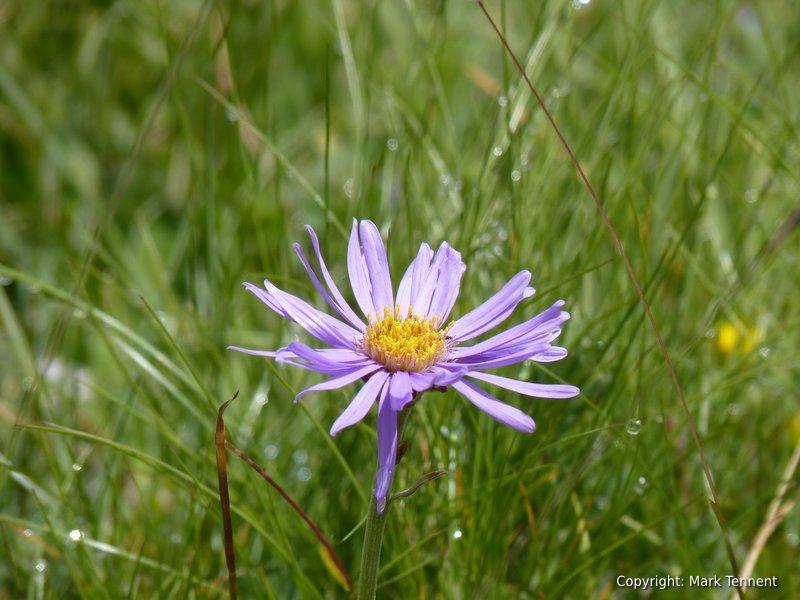
Alpine flowers and ski resorts
The ski resorts are not typically the best place to enjoy alpine flowers. The developers of ski resorts are not renowned for their environmental sensibilities. Ski runs are ?created? or ?improved? by bull-dozing the ground. Plants that already have to cope with a challenging environment are irrepairably damaged or may disappear entirely. Visit a ski resort in summer and the lines of the ski runs are immediately apparent and the jeep tracks used by the maintenance teams to work on the ski lifts and snow making machinery. Artificial lakes are carved out of the hillside to provide a water supply for snow making. The artificial snow also has a detrimental affect. The density of artificial snow and it’s composition inhibits the growth of certain plants.
Plant Protection in the French Alps
In the French Alps there are a range of protected areas: National Parks, Regional Parks, sites designated Natura 2000**, Reserves Naturelles (Nature Reserves) and R?serves biologiques. Remember many flowers are protected so please don’t pick them.
Identifying Alpine Flowers
I seem to suffer from a form of plant ?dyslexia?. I find it hard to remember loads of names particularly when I’ve learned some in Engish and others in French. Perhaps I should just learn the Latin! My current favourite identification aids include an ?App? called ?Alpine Flower Finder? by Renata Caviglia. You can find it on the Apple store.

